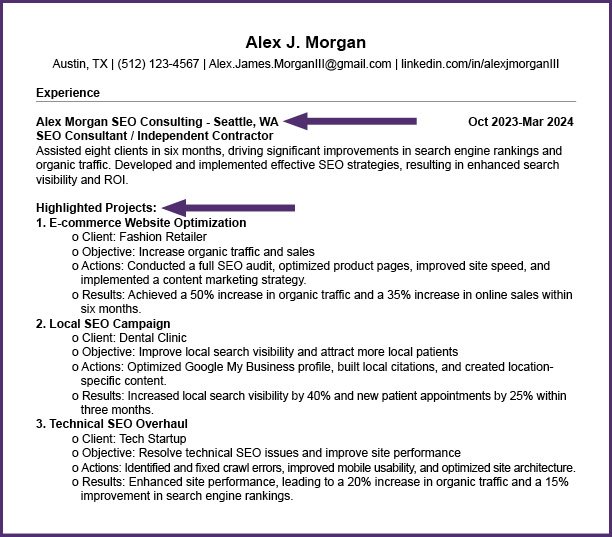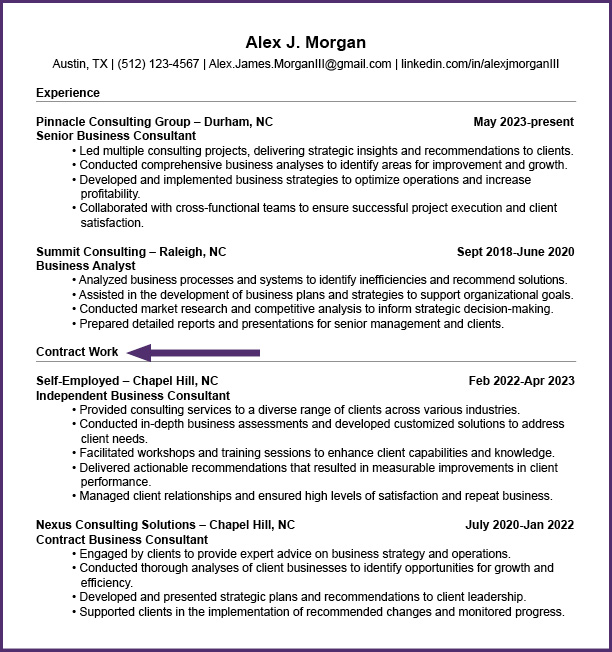Contract jobs are a way to show your versatility in today’s job market. While listing contract jobs on a resume hasn’t always been encouraged, highlighting this experience is now more valuable than ever. Here’s your opportunity to stand out from the crowd by listing your contract jobs in a way that seamlessly sells your talent.
Contract vs. Full-Time Employment: What’s the Difference?
While full-time (W-2/salaried) employees grow from their time at one company, contractors (1099 workers) grow from time spent on various projects with different companies. The biggest differentiators for a contractor are equipment, taxes, rates, work locations, benefits, and who employs you.
Full-Time Employee
A W-2/Salaried employee works 40 hours weekly for one employer who provides their benefits, and typically works on-site or hybrid. There’s an opportunity to grow with the company by getting raises, accepting promotions, and expanding your skills.
Fixed-Term Contractor
This contract lasts for a specific period. Sometimes, you’ll receive employee benefits during the duration of your contract, but not necessarily. You’re more likely to receive benefits as a contractor when you are hired by a third-party vendor or temporary staffing agency.
Pro Tip: With contract-to-hire roles, there’s more opportunity to convert into a W-2/Salaried employee once your contract ends.
Freelance Contractor
Freelancers work to fulfill a specific project. These contracts outline specifics like dates, pay, deliverables, and more. As an independent contractor, you’re considered self-employed since it’s your responsibility to pay National Insurance Contributions (NICs) and tax contributions. Find out if you are considered an employee or an independent contractor.
How to Show Contract Jobs on Your Resume
Group Your Experience
Place your series of freelance or temporary jobs under one heading — like a staffing name, a grouped firm name, or even your own name! Emphasize the most relevant skills and compartmentalize your experience, showing a focus on one industry.
How to group your contract jobs under one company:

Label Your Experience
If most of your experience is full-time hours with only one or two contract jobs to date, the best method is to label your experience. Add the terms “temporary,” “temp,” or “contract,” in a consistent way, labeling your contract jobs on your resume.
How to label your contract experience:

Highlight Your Experience
Focus on relevant highlights from each assignment to create a common theme. Under the employer section (This could include an agency name or your own firm!), include a blurb that contextualizes your experience.
How to highlight different projects:

Create a Separate Section
If the contract jobs don’t fit in with your other experience, create a separate section to avoid having employment gaps on your resume. If there are substantial employment gaps, explain these gaps on your resume.
How to add a contract work section on your resume:

Pro Tip: If a job doesn’t add value to your resume, there’s no need to include it!
Your versatile skills as a contractor can take you far! See just how far with our open roles.
Ready to level up your career? Check out some of our other resume tips: how to list projects, how to highlight promotions, and how to show adaptability skills on your resume.
















